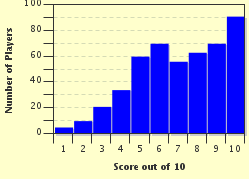Quiz Answer Key and Fun Facts
1. The Zurich cabaret, founded by Hugo Ball, Emmy Hennings, and Tristan Tzara among others and featured in the movement's beginnings, was named after a famous French proponent of freedom of religion and freedom of expression. Where did Dada have its start?
2. In many respects art is a reflection of the culture and times that produce it. In a world gone mad, where countries plummeted willfully into World War I, Dadaists rejected the conventional because it reflected this insane world. According to Hans Richter, Dada was not art but what?
3. Considered now to be one of the most important pieces of Dada art even though it was never formally shown, "Fountain" by artist R. Mutt (1917) was actually the product of which Dada artist known for his readymades?
4. Which German author and poet gave voice to the Dada movement when he created the first Dada Manifesto in 1916? (Not to be confused with the one that came later in 1918.)
5. Which American artist experimented with Dada early in his career and is known for his use of photograms, as well as being a renowned fashion and portrait photographer later in his career?
6. Which Swedish artist collaborated closely with Hans Richter for three years as they developed concepts in abstract film making, and eventually produced his own film "Symphonie diagonale" just before his untimely death in 1925? (There is a hint within the question itself.)
7. Which American artist was known as the "Mama of Dada" and wrote an autobiography titled "I Shock Myself"?
8. Although Romanian artist Tristan Tzara had embraced the anti-war philosophy of Dada during WWI, by WWII he was actively involved in the resistance to Nazi Germany, joining which occupied country's resistance movement?
9. Known as 'The Baroness', which Dada poet's works were first published as a complete collection in 2011 in "Body Sweats" some 84 years after her death?
10. Which artist, who had a profound influence on the art scene in the newly founded nation of Israel from the late 1940s through his death in 1984, first played a crucial role in the Dada movement in Zurich beginning in 1916?
Source: Author
tazman6619
This quiz was reviewed by FunTrivia editor
looney_tunes before going online.
Any errors found in FunTrivia content are routinely corrected through our feedback system.

